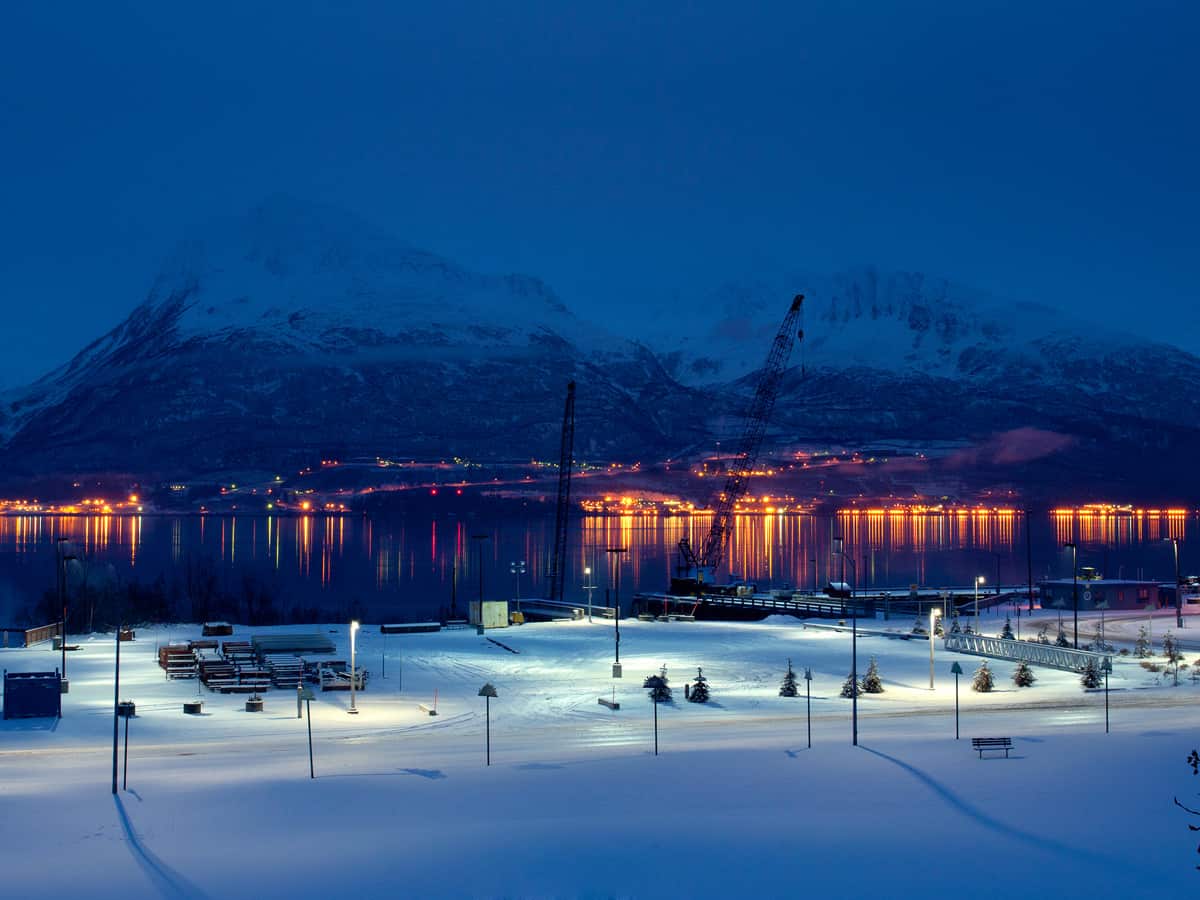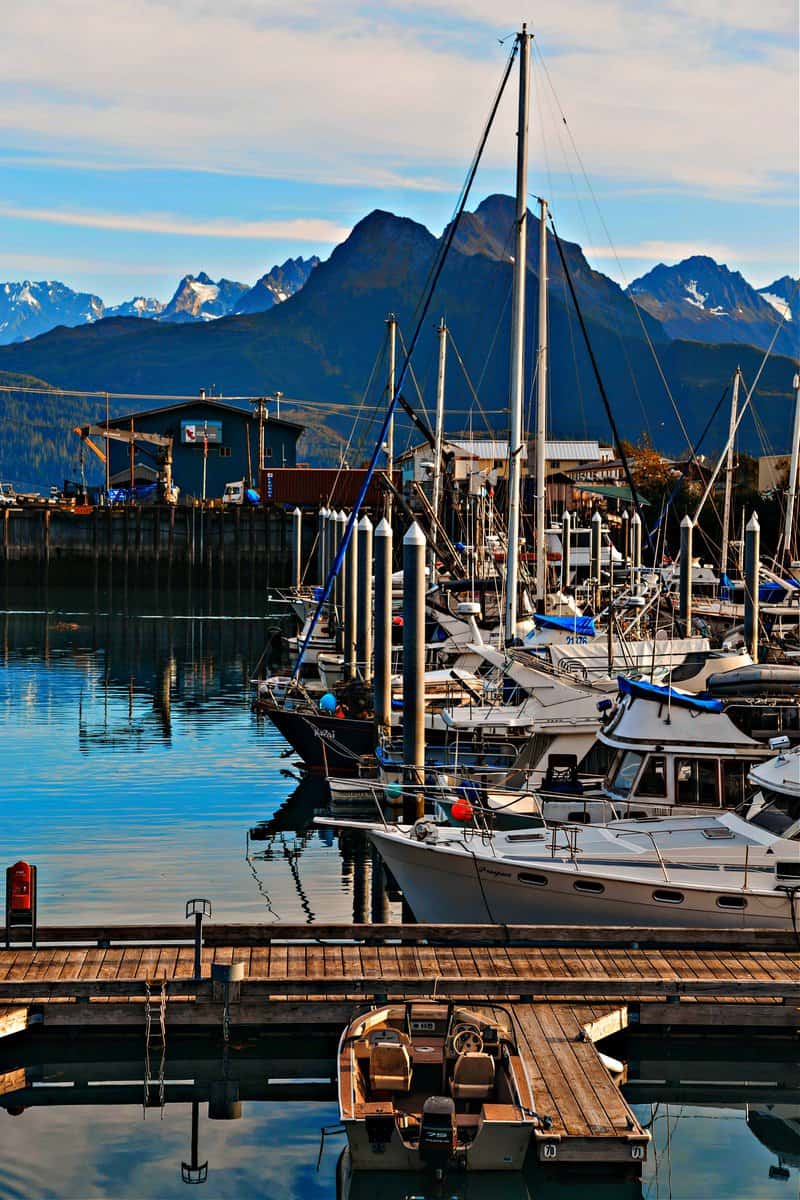March 27, 2024, marks 60 years since the most powerful earthquake in North American history shook the very foundations of Valdez, Alaska.
This 9.2 Moment Magnitude (Mw) quake, second only to the 1960 Valdivia earthquake in Chile globally, triggered a devastating tsunami that swallowed much of the town.
But the resilient people of Valdez did something extraordinary — they picked up and moved their entire town to safer ground.
Now, Valdez welcomes visitors to see its remarkable history. You can visit the remains of the old town, destroyed by the 1964 earthquake.
You can also explore the new Valdez, which was moved just 4 miles away to safer land after the quake. Seeing both the ruined original site and the rebuilt modern town gives you a special look at Valdez's landscapes and the strength of its people.

Look Back at The Great Alaska Earthquake's Wrath
The Great Alaska Earthquake of 1964 unfolded like a harrowing tale for the small port town of Valdez.
At 5:36 p.m. on March 27th, the violent tremors struck this remote coastal community, measuring a staggering 9.2 Mw.
Submarine landslides were triggered as the ground heaved and buckled, causing massive water displacement. Towering sea waves, reaching over 100 feet, surged toward the town, sweeping away homes, businesses, and anything in their path.
The roar of the approaching walls of water struck terror into the hearts of those who witnessed this terrifying force of nature.
The shaking also caused significant ground breakage, with fissures opening up and swallowing structures whole. Buildings collapsed, and the town's infrastructure was reduced to rubble. Fires broke out, adding to the chaos and destruction.
In the aftermath, the once-thriving community lay in ruins, with a staggering loss of life and property.
According to the Health Analytics and Vital Records of Alaska's Department of Health and Social Services, there were 1,440 deaths, with 115 deaths (7.8% of the total) directly resulting from the earthquake.
Of those 115 earthquake-related deaths, 100 had death certificates citing a tidal wave, drowning, or boating accident as the underlying cause.
The prognosis of recurring seismic activity and the risk of future tsunamis loomed large, making the decision to relocate the entire town to a safer location a necessity.
Though shaken to the core, the resilient residents of Valdez banded together to rebuild their lives. The new site, about 4 miles northwest on Mineral Creek, offered greater stability and natural protection from sea waves.

Tour Old Valdez for a Glimpse into the Past
While the catastrophic 1964 earthquake left the original Valdez townsite in ruins, large sections remarkably remain intact over half a century later.
Visitors can now explore the abandoned streets, where nature has reclaimed areas once brimming with homes and businesses.
Crumbling building foundations, buckled roadways, and brick chimneys protruding from the undergrowth are haunting reminders of the day Valdez's existence hung in the balance. Yet the remnants also symbolize the town's perseverance to start anew.
This eerie, historic setting provides a firsthand glimpse into the force that moved an entire town four miles away.
Walking tours, interpretive signage, interactive digital maps, and guided excursions help bring the stories of March 27, 1964, to life — check them out here. For a glimpse of what a free self-guided tour could look like, you can also watch the video below:
Commemorate the Quake at the Valdez Museum
No visit to the new Valdez is complete without exploring the professionally-curated exhibits at the Valdez Museum.
Multimedia displays, artifacts, and survivors' firsthand accounts depict the harrowing experience of the 1964 earthquake and tsunami.
The museum ensures the lessons and stories from this historic event are preserved for future generations. Special exhibits also highlight Valdez's incredible transition to its new location and the engineering feats that made the modern town possible.
The Valdez Museum preserves the heritage and culture of Valdez, not just of Valdez but also of the Copper River Basin and Prince William Sound.
Through engaging exhibits, programs, and historical interpretation, it brings the region's stories to life. It's a community hub where people gather and learn about the area's unique way of life.
Hear It Straight from the Survivors
The United States Geological Survey (USGS) report on the 1964 Valdez earthquake collected firsthand accounts of how the quake unfolded for the communities on the ground. Here's a summary of some of their narratives:
An eyewitness at the docks, likely the SS Chena crew, recounted a tremendous noise as the ship violently rolled over 50 degrees in the intense wave action. They could see people running with no place to go, engulfed by buildings, water, and mud.
At one point, the Chena rose 20-30 feet before bottoming out and shooting forward again as the stern rose until the propellers emerged.
Two crew were killed. As it drifted away, they watched people desperately trying to find something to hold onto as there was no time to escape the turbulent sea.
A fisherman in the Narrows reported riding out an immense wave on his boat, likely a powerful down-bay surge reinforced by submarine slumps off Port Valdez. Others observed a mist obscuring the area during the first two waves' turbulence.
You can watch other personal stories from the Valdez survivors themselves below:
Here's another testimony from one of the live clips that captured the earthquake. In case you find the video the viewer was talking about, you can reply in our comments section below:
My dad, Dan Boddy, was also on the dock in Valdez at the time of the earthquake, having driven down from Fairbanks that day to get a load of cargo from the Chena for Lyndon Transport.
In the original film taken by these two photographers, there was a sweep across the dock, showing the people on the dock. I have tried over the years to get that footage, but it has been cut out and even the U of A in Fairbanks doesn't have it.
I had seen it on Seattle's PBS station years ago, and my mom had wanted to see it. I always felt that my dad was one of those standing in the front of everyone else, and my mom wanted to stop the film and look more closely.
She passed away five years ago this month, at the age of 95, and I assume now she knows everything she wondered about that day in Valdez! Of all the people lost on the Valdez dock, my dad's was the only body found.
You can also watch the actual clip of the earthquake here:
So, Exactly How Was Valdez Relocated?
This massive relocation effort, which took about two to four years, was done by extensive planning and design to ensure the rebuilt town would meet stringent seismic safety standards and enhance functionality, livability, and aesthetic appeal — symbolizing a rebirth from the ruins of the 1964 disaster.
The new site chosen was about 4 miles west near Mineral Creek. This location was selected for its bedrock stability, higher elevation to protect against future tsunamis, and proximity to the planned trans-Alaska pipeline route.
The design of the new Valdez by urban planners incorporated earthquake-resistant construction requirements and a dispersed layout of residential neighborhoods, commercial cores, and recreation areas.
The town's stunning natural surroundings of forests, waterways, and mountains were celebrated through abundant greenspaces and view corridors.
Today's visitors can experience the well-thought-out community spaces, pedestrian-friendly design, and infrastructure resilience that make new Valdez both a safe place to live and a charming destination.
Speaking of charming destinations, you should drop by these towns while you're in Alaska: 13 Charming Small Towns in Alaska You Shouldn’t Miss.
What's Valdez Like Today?
Valdez today is a vibrant town boasting a blend of natural beauty and modern amenities. Visitors are drawn to its stunning landscapes, wildlife, and outdoor activities like kayaking, fishing, and hiking.
Watch how the locals rave about their beloved town below:
The town’s history is commemorated at the Valdez Museum, where exhibitions tell the story of the earthquake and the town's remarkable recovery.
The official Valdez tourism website offers a wealth of information on attractions, accommodations, and events, making it easy for travelers to plan their visit and experience the enchanting story of Valdez firsthand.
While you're there, check out the other top Valdez spots to visit in our guide, "6 Awesome Things to Do in Valdez, Alaska (Including Photos)."
A Story of Resilience and Rebirth
The remarkable story of Valdez serves as a powerful inspiration. This Alaskan town refused to surrender after the devastating 1964 earthquake and tsunami.
Instead, residents rallied together, persevered, and meticulously rebuilt their community as a safe, modern haven.
Valdez is more than a destination — it symbolizes hope and the indomitable strength of the human spirit. Let their story inspire you to face challenges with courage and determination.
